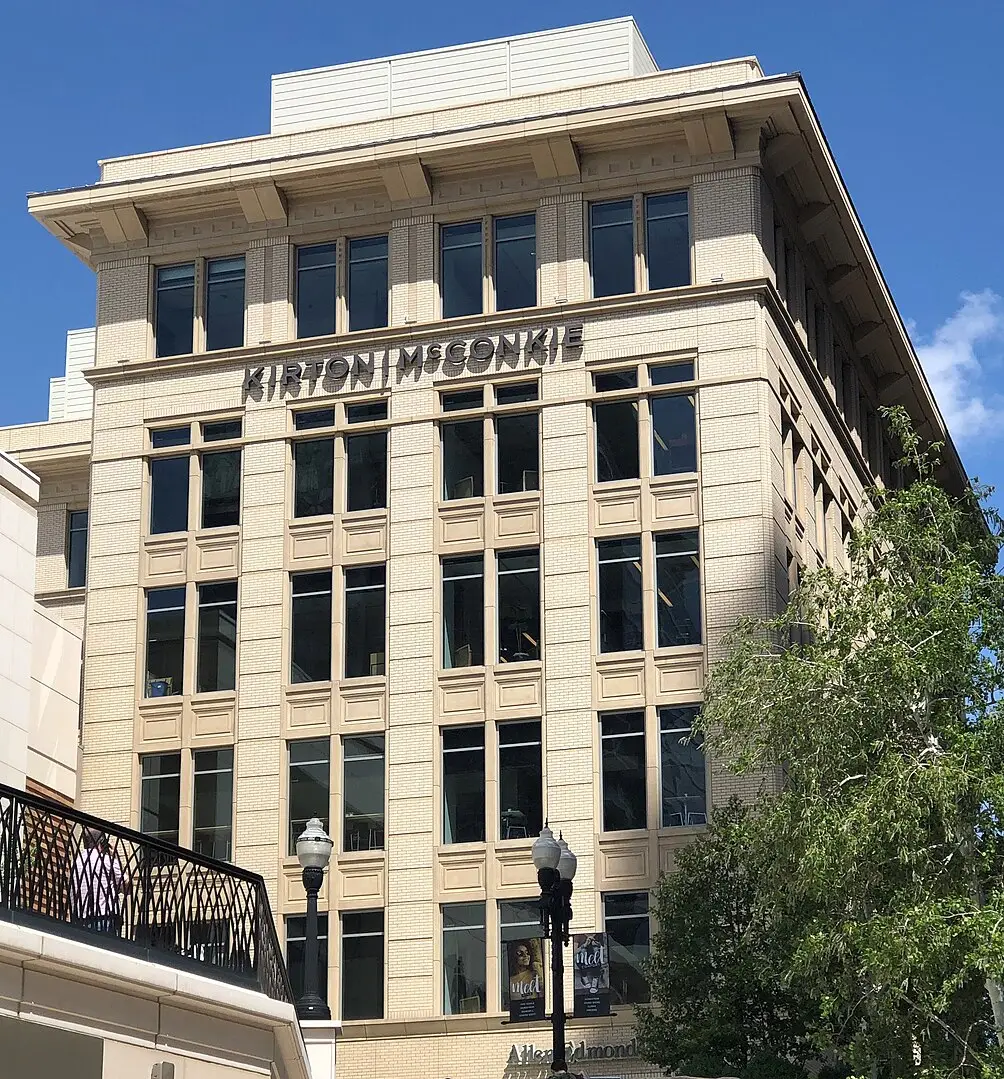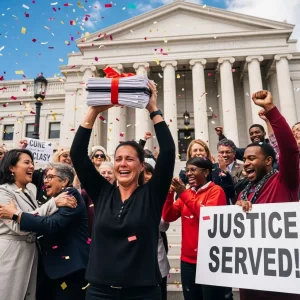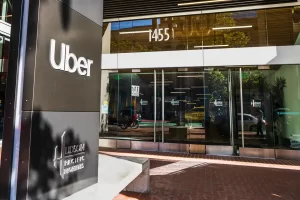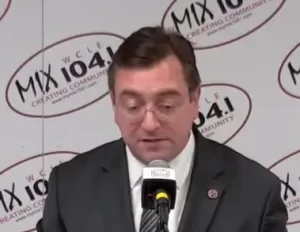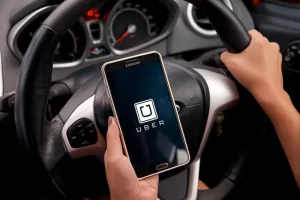Photo: Kirton McConkie building in downtown Salt Lake City; via Wikipedia.
A prominent attorney who represents The Church of Jesus Christ of Latter-day Saints (LDS) defended the church’s abuse helpline and clergy privilege laws, describing them as among the best tools available to protect children from abuse, Tad Walch covered Friday for the Utah-based publication, Deseret News, via BishopAccountability.org.
Speaking at the 2025 FAIR (Faithful Answers, Informed Response) Conference — an event where, according to organizers, “scholars and professionals discuss matters of interest related to the defense of the faith” — Randy Austin, an attorney for Kirton McConkie who serves as lead outside controversy-and-crisis counsel for the church, said the helpline and clergy privilege laws work together to increase abuse reporting. He argued that this combination results in more reports of abuse and, ultimately, safer outcomes for children.
“Far more abuse gets reported when the bishop calls the helpline than if we didn’t have one,” said Austin. He added that clergy privilege laws, which exempt bishops from mandatory reporting when abuse is disclosed in a confession, actually increase the amount of abuse reported. “We learn about more abuse in places where the privilege exists than where it doesn’t.”
Austin emphasized that abuse cannot be tolerated in any form and shared examples to illustrate how the helpline works. In one case, a Boy Scout disclosed to his bishop that his scoutmaster was sexually abusing him. The bishop considered speaking to the scoutmaster directly, but helpline workers instead advised canceling an upcoming campout, reporting the allegation to police, and protecting the scouts from further harm. The scoutmaster was arrested and later convicted.
Austin, a survivor of child sexual abuse himself, stressed that the system is not designed to cover up abuse. “I have not spent my life covering up abuse or overseeing an operation that does. This is as valuable a tool as exists in the world to protect children,” he said.
How the Helpline Operates
The LDS abuse helpline operates 24/7 to provide legal and counseling advice to 31,000 bishops and branch presidents, as well as 4,000 stake and district presidents worldwide. Many of these lay leaders are new to their roles and have no prior experience handling abuse cases. The helpline gives them immediate access to experienced clinical and legal professionals who can guide them on how to protect victims, report abuse, and access local resources.
According to the church attorney, the helpline serves three main purposes: clarifying what constitutes abuse, connecting leaders to appropriate victim support services, and helping them take immediate steps to protect children while law enforcement investigates. The church’s policy directs leaders to report abuse to civil authorities. Hundreds of cases are reported to law enforcement each year through calls to the helpline.
However, critics of the LDS Church’s abuse helpline argue that, despite claims of prioritizing victim safety, the system can function more as a legal risk-management tool than a survivor support resource. Lawsuits and investigative reports have alleged that helpline staff sometimes direct bishops to call church attorneys first, potentially delaying or discouraging immediate contact with law enforcement. Advocacy groups say this approach can shield the institution from liability while leaving survivors and their families feeling sidelined, particularly in cases where clergy privilege is cited to keep abuse disclosures confidential.
Clergy Privilege and Reporting in the LDS Church
Clergy privilege, also called priest-penitent privilege, allows certain conversations between clergy and members to remain confidential, even when abuse is disclosed. Austin noted that 37 U.S. states have laws recognizing this exception. He said studies and church experience show that protecting this privilege results in more abuse disclosures, often from victims or offenders seeking help.
“Because the privilege exists, victims and sometimes offenders go to bishops,” Austin said. “That happens every Sunday in chapels all over the United States, because that relationship is cloaked in privilege.” In such cases, the bishop becomes a responsible adult who can take steps to protect a child from further harm.
Opponents of clergy privilege laws argue that shielding abuse disclosures made to religious leaders from mandatory reporting requirements creates dangerous gaps in protection. They contend that such exemptions allow abusers to avoid detection and enable institutions to handle allegations internally rather than involving law enforcement. Child protection advocates say that every adult — including clergy — should be required to report suspected abuse to civil authorities, regardless of how the information was obtained, because early intervention can prevent further harm and increase the chances of securing justice for victims.
Additional Church Safeguards
The church’s General Handbook states that when abuse occurs, leaders must first help the survivor and protect vulnerable individuals from future abuse. According to the social worker, safeguards include:
- Requiring two adults to be present at all child or youth activities
- Abuse prevention training for leaders working with youth
- Membership record notations for members who commit abuse, preventing them from serving with children or youth
- Background checks for adults working with children, including compliance with Utah’s new law requiring sex offender registry checks
- Allowing youth to bring parents or others to interviews with church leaders
- Providing abuse prevention and counseling resources in the church’s Gospel Library app
Floodlit.org, a non-profi independent resource that tracks LDS sexual abuse notes that widespread allegations and litigation persist despite institutional safeguards. Floodlit’s public database now lists more than 4,300 LDS-related sexual abuse case entries and counting, along with a map documenting reports tied to over 750 locations, indicating the scope of complaints that continue to surface. In 2024–2025, reporting also highlighted waves of new lawsuits, including nearly 100 cases filed in California during that state’s lookback window, while Floodlit has published special reports on settlements and defense costs linked to abuse claims against church entities.
One of the most high-profile current cases involves Dr. David Farley, an Oregon physician accused of sexually abusing more than 170 women and children, including some during his time in LDS ward and stake leadership. Many plaintiffs say they met Farley through the church, and in an ongoing lawsuit, survivors allege he used his religious standing to gain their trust before subjecting them to invasive and unnecessary medical procedures. One plaintiff said she was referred to Farley “because of his position within the Mormon Church” and later endured ungloved breast and pelvic exams, a violently inserted IUD, and other inappropriate contact. The LDS Church is now fighting in court to keep internal records about Farley confidential, a move critics say could prevent the public from learning what church leaders knew and when.
If you are a survivor of sexual abuse connected to the LDS Church, it is never too late to learn your legal options. Many survivors say the real value goes beyond dollars. It’s also about being heard, validated, and empowered to reclaim your life.
